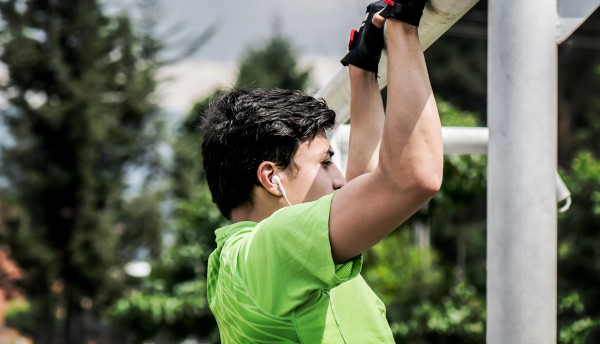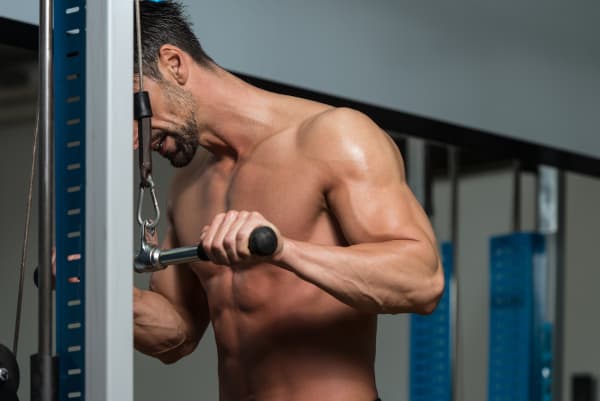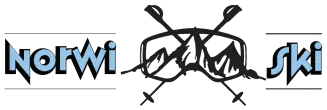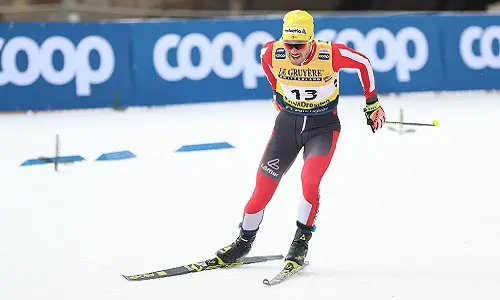Table of Contents
If you have decided to take on cross-country skiing, there are a couple of things to do to physically prepare yourself for cross-country skiing. Remember, that this sport moves all your body intensively, so you should pay adequate attention to preparing your muscles.
For starters, we have a couple of simple exercises for conditioning your body for cross-country skiing.
The first training focus on moving all your primary (lower) muscles as well as your core and your upper body, that you need for poling and efficiently moving yourself forward, meanwhile the last part is about increasing your endurance.
Make Your Training Schedule
A good training schedule is the first step to a successful cross-country ski season. While a routine is always customized according to the individual’s goals, weight, height, and ability, there are a few general tips that work for all. For a better illustration, we’ve outlined a sample training plan for you.
For a schedule aimed at building muscle, we focus on strength and conditioning exercises:
- The first two weeks, work out only three days a week.
- After two weeks, your body will be ready to transition into a 5x/week schedule smoothly.
Once the days are sorted, we come down to time.
A day’s workout should be at least 30-60 minutes long, depending on how much your body can take. Now that we also have the time down, you need to move on to the schedule itself. A good 30-minute strength training workout may look like this:
- 3 minutes on a treadmill or elliptical for warm-up
- Squats: 12 reps x 3 sets
- Pullups: 6-8×2
- Pushups: 3-5×2
- Walking Lunge with Rotation: 6×2
- Skater with Uppercut: 6×2
- Step Up with Side Leg Lift: 15 reps on each side
- Deadlift: 12×3
- 30-60 second plank: 1×2
- Chop and Lift: 12×2 on each side

Warming Up
If you jump right into a heavy workout without having first warmed up, you risk pulling or hurting a stiff muscle. Therefore, it is imperative that you allow your muscles to ease into a workout by warming up for 5-10 minutes.
A warm-up is as simple as it gets. You can go for a brisk walk, do a series of jumping jacks, skip rope, do a couple of simple lunges, stretch, or jog on the treadmill at a low speed. This is really all about your personal preference. The only rule is to not skip the warm-up!
Best Cross-Country Ski Exercises
Once you are warmed up and ready to take it to the next step, turn to these incredibly effective exercises detailed below.
Primary Muscle and Lower Muscle Exercises
Although cross-country skiing works all your body, but there are still a couple of muscles which move more than the others. These primary muscles are your hip muscles, the hamstrings which connect the hips and the knee as well as the quadriceps. The calves and the foot muscles are also under heavy pressure.
You should do two of this primary muscle training every week:
- Use a hip abductor machine for strengthening your hips. Three or four sets of 10-12 repetitions will do. Don’t overexert yourself, since that could actually do more harm than good.
- If you can’t go to a gym, but have weights at home, deadlifts are also perfect for engaging the hips and your lower back, as well as the quadriceps. Have your feet shoulder width apart, take the bar and squat so that your thighs are parallel to the floor. When you are lifting the weight, slowly straighten your legs and the back, while keeping your head up, looking forward. Then slowly lower the bar the same way, and do 2-3 sets of 6-8 repetitions of these.
- For your legs, get to the calf raise machine for working on your calves as well as the feet. The leg extension machines will help with the quadriceps, while the leg curl machine will condition your hamstrings. Also three to four sets of 10-12 repetitions are needed from each of these.
- Other useful cross-country ski exercises for working the primary muscles include
1. Walking Lunge with Rotation
Props Required: Six Cones
Muscles Worked: Hip Flexors, Hamstrings, Glutes, and Abs
- Start by placing six cones nearly 5 yards apart in a zig-zag pattern.
- Take a step forward with your right leg and position yourself in a lunge in the direction of the first cone.
- Lower your hips until your left knee is positioned an inch or two off the floor.
- Bring your arms up to the shoulder level towards your right leg. Make sure to engage your entire torso in this rotation by tucking your stomach in and keeping the muscles taut.
- Now, step forward with the left leg in the direction of the second cone, and keep repeating until you complete the zig-zag pattern.
2. Skater with Uppercut
Props Required: Two Lightweight Dumbbells
Muscles Worked: Abs, Glutes, and Quads
- Place your feet hip-width apart and hold a dumbbell in each hand.
- Hop onto your right foot, such that your left leg is raised in the air.
- Holding that position, bring your left arm up towards your chest as if aiming for an uppercut punch.
- While bringing your arm up, engage your core as much as possible by slightly tilting forward from the torso.
- Hold the position for a few seconds, then hop onto the left foot and repeat.
- You can modify this exercise by adjusting the weight of the dumbbells and also by how far you choose to hop during each rep.

3. Single-Leg Squat and Row
Props Required: Weighted Cable Machine
Muscles Worked: Glutes and Quads
- Start by deciding the amount of weight to be used on the cable.
- Once done, plant your right foot down on the floor, and tuck your core in.
- Lift your left foot off the floor, making sure that the left leg stays close to the right leg but does not touch it.
- Now hold the cable in the right hand. Once you have positioned yourself correctly, bend the left leg as if aiming to sit in a chair and squat until your hips are parallel to the floor.
- Focus on your glutes by clenching them fully, and row your arm holding the cable. Repeat with the opposite side.
4. Step Up with Side Leg Raise
Props Required: Stepping stool, at least 8 inches high
Muscles Worked: Quads, Hip Flexors, and Glutes
- Begin with your right foot on the step and your left foot on the floor.
- Then, step up until you are fully balanced on your right leg, and your left leg is in the air.
- Keeping your right leg straight, gradually raise your left leg outwards and upwards, then back again.
- Finally, return to the starting position. Do 15 repetitions on each side.
5. Squat Reverse Lunge with Knee Raise
Props Required: None
Muscles Worked: Calves, Glutes, and Quads
- Squat with your hips parallel to the floor and your feet shoulder-width apart.
- Then stand back up and take your left leg backward in a lunge, bending both your knees at 90-degree angles, such that the back knee hovers over the ground.
- Shift all your weight onto the right foot as you lift your left foot, moving your left knee to your chest.
- Finally, place the left foot back on the floor. Repeat ten times on each leg.
Core Muscle Exercises
Increasing your core strength is just as important part of cross-country ski conditioning as finally getting on the skis themselves. Don’t underestimate its significance, since it also helps you with balance and overall body awareness, which is extremely beneficial when you have five feet long skis attached to you.
Schedule a core workout session twice a week.
Below are some easy exercises to enhance the strength and flexibility of your core.
1. Planks
Props Required: None
Muscles Worked: Full Body
- Start your core workout with three front planks and three side planks.
- Hold each position for 30-60 seconds.
- Make sure your body is straight all across and your pelvis is tautly drawn in.
- Do as many as you can, but with all the other exercises 3 sets of 10 repetitions should be enough.

2. Crunches and V-Ups
Props Required: None
Muscles Worked: Abdominal Muscles
In order to prevent your back from straining, you have to activate your abdominal muscles. This is where crunches enter the scene.
- Begin with 20-30 controlled and light crunches.
- Then advance to V-Ups when you feel charged enough. Aim for three sets of 15 V-Ups each.
- Do it slowly, and if you can’t complete them all, don’t worry. You shouldn’t overexert yourself!
3. Plank with Single Arm Row
Props Required: Two dumbbells
Muscles Worked: Abs, Lats, Shoulders, and Core
- Start in a plank position with your feet planted wide apart and a dumbbell in each hand.
- Row your right elbow back as you bring the dumbbell towards your chest.
- Return the dumbbell to the floor and repeat on the left side.
- Make sure that your body is straight like a plank throughout the exercise.
- You can do this by keeping your pelvis tucked in, not letting your hips swing, and keeping your chin slightly drawn in while keeping your gaze on the floor. Do 15 repetitions on each arm.
4. Chop and Lift
Props Required: Resistance Band
Muscles Worked: Abs, Obliques, Glutes, Quads, Hamstrings, and Calves
A combination of two supremely effective exercises, this is one not to be missed.
- For the first half, secure the band at shoulder height.
- Stand on the side of the band such that you can easily grab it with both hands.
- Then, with both your hands holding the free end of the band, plant your feet wide apart and use your core to pull the band down across your body.
- The key here is to engage your core muscles instead of your arms. Repeat 15 times facing either side.
- For the second half, secure the resistance band at ankle height.
- Stand sideways to the band such that when your hands hold the band, the band stands taut and tensed.
- Again, with both your hands holding the free end of the band, plant your feet wide apart.
- Rotate your upper body upwards as you begin using your core to pull the band upwards across your body.
- Keep pulling and rotating until your arms are straightened out, and you begin facing the other direction. Repeat 15 times on either side.
5. Windshield Wipers
Props Required: None
Muscles Worked: Abs, Obliques, Lower Back Muscles, Hip Muscles
- Lay on your back with your legs up in the air.
- Gradually sway your feet from right to left as close as possible to the ground.
- Repeat 10-20 times in each direction.
6. Supine Leg Lift
Props Required: None
Muscles Worked: Hip Flexor
- Resting on your back, lift your legs off the floor.
- Draw your pelvis in, and make sure your lower back touches the floor.
- Hold the position for 30-60 seconds, aiming for a total of 240 seconds.
7. Russian Twist
Props Required: None
Muscles Worked: Core Muscles, Obliques, Hip Flexor, Abs.
- Do these twists only when you are certainly warmed up in the core.
- Lay on your back with your feet firmly planted on the floor, knees bent.
- Now lift your torso off the ground.
- Twist from left to right from the hips onwards, and then back. Repeat 15 times.

Upper Body Exercises
Training your upper body is essential for eventually being able to proper yourself forward on skis. Listed below are some simple yet effective upper body exercises that will go a long way in toning you up. All you need is some basic equipment, some workout space in your home, and 20-30 minutes three times a week.
Schedule at least one upper body training session each week!
- You should get to a Lat Pulldown machine and perform three or four sets of 10 repetitions.
- Weighted dips are also an excellent exercise for your triceps, chest and arm muscles, but also the upper and lower back which are crucial for cross-country skiers. Perform 2-3 sets of 10 repetitions, but feel free to vary if it’s too much.
1. Biceps Curls
Props Required: Dumbbells
Muscles Worked: Biceps, Brachialis, Brachioradialis
Although you wouldn’t think that you will need biceps work on a regular cross-country ski day, but in fact you do. Poling moves almost all your arm muscles, including the frontal regions where your bicep lies.
- Do 2-4 sets of 10-12 repetitions of Bicep Curls.
2. Triceps Pulldowns
Props Required: Resistance Band or Pulldown Machine
Muscles Worked: Triceps Brachii, Anconeus
Another great exercise effectively imitating cross-country skiing movements. Triceps pulldowns could be performed on a machine or simple resistance bands at home.
- Do 3-4 sets of 8-12 repetitions.
3. Pull-Ups
Props Required: Pull-Up Bar
Muscles Worked: Lats (Latissimus Dorsi), Traps, Rhomboids, Thoracic Erector Spinae, External Oblique, Infraspinatus, Teres Minor
- Stand under the pull-up bar with your feet hip-width apart.
- Lightly jump up to reach the bar with your hands, and hang from the bar with your arms extended completely.
- You can bend your knees if you find your legs touching the ground.
- Then, pull your body up using your shoulders, back, and abdominal muscles.
- Keep pulling yourself up until your chin crosses the bar.
- Just as slowly, bring yourself back down until your arms are fully extended once more. Do three repetitions.
4. Dips
Props Required: Chair
Muscles Worked: Triceps, Back Muscles, Abdominals, Chest, Shoulders
- Sit on a chair with your feet firmly planted on the floor.
- Grip the sides of the seat with your hands, and slowly move your upper body off the chair.
- Keep going until your buttocks are in the air and knees slightly bent.
- Then begin lowering your body by bending at your elbows; Breathe in as you do this.
- Finally, push back up to your original position while you breathe out. Do three repetitions.
Endurance Training for Cross-Country Skiing
- Choose an endurance sport, such as running, biking, hiking with poles or roller skiing.
- During training keep a steadily low level of intensity. The point is that you slowly condition yourself to be able to maintain long durations of physical activities. This is extremely important for the effective burning of calories.
- You should find at least two or three occasions for endurance training each week.
- Beginners should start out with just above an hour long training, and should gradually move up to three, four hours long durations of low intensity activity.
If you are willing to dedicate yourself to the task, later on you should invest in rollerskis or a cross-country ski machine. These allow both your upper and lower body muscles to acquire the same motions as they would with actual cross-country skis and poles, and also improve your balance and coordination.
For the sake of variety, you should also include 30 minutes to one hour long one-time treadmill and rowing exercises (incline!) every second week.
Cross-Country Ski Training Tips
- Never skip arm day: upper-body strength is just as crucial when it comes to skiing, and flimsy arms will get you nowhere even if your legs are in the greatest shape.
- Consistency is key: no workout will help you if you fail to follow through with it. Muscles take time to respond, and you must stick to your routine for the prescribed duration of time.
- Switch it up: changing up your routine from time to time will not only keep the fun alive for you, but it will also prevent your body from getting used to a workout and therefore not responding to it.
The Importance of Legwork
Your legwork is crucial in skiing, so you need to include it in your cross-country ski training. The most important factor is your coordination. Both your feet should work in coordination and support each other to make you glide seamlessly on the snow while you ski. Not only that, your correct legwork will directly impact your pace on the slopes, and for this reason, you must focus on legwork training in the off-season.
Walking at your normal pace is quite beneficial for your leg muscles in order to train them for shuffling techniques on the ski. Focus on drills that involve the following:
Controlling your leg symmetry is essential. In skiing, the skier ideally needs to keep his/ her legs symmetrical without opening them wider than they are required. Test your symmetry when you jump from one side to the other, for instance, from left to right and repeat.
You also need to work on improving your flex pattern. If you do not have a good flex pattern, you end up having too much knee flex and poor ankle flex. This puts your entire body weight on the skis which could injure your knees. To work on this, test your flex patterns when you jump from one side to the other and be aware of your flexing ankle. Try reducing flexing your knees.
Increasing your leg power can go a long way. Many skiers use arms to propel their bodies when they encounter a turn while skiing. This could have worked for you but when you use arms to do the work that the leg muscles are supposed to do, this means you are rotating your upper body and redistributing your body weight. It is not technically correct to have a skier wave his/ her arm all around the place when skiing. You need a proper legwork to make sure your feet know how to work on those turns.
Closing Thoughts
Furthermore, once you’ve completed your cross-country ski exercises and/or the training schedule, make sure to treat your body well in order to aid recovery times. A lot of muscle groups will be in action when nordic skiing, which means you need to consume food that helps reduce soreness, swelling, and fatigue. Some examples of such foods include kale, salmon, and so forth.


